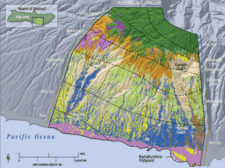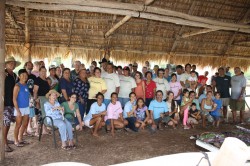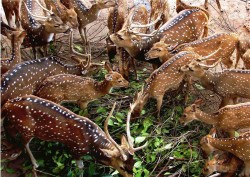Rising from the Rocks

Native plants making a comeback
Editorial by Catherine Cluett
We’re bumping along a rocky track, ascending steeply through a landscape some would call lunar. Ahead of us is mostly gray—Kawela’s barren, stony slopes and gulches, topped by a thin line of green where the mountaintops meet the sky. But I can’t help turning in my seat of our all-terrain vehicle toward the view behind us—each bump expands a breathtaking panorama of Maui to the east, Lanai’s slender back, the turquoise fingers of Molokai’s south shore reef, and the slopes of Pu`u Nana to Molokai’s west.
In the years before European contact in the 19th century, these mountainsides were covered in lowland forests, according to historic records.…















